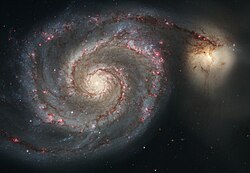Heic1501a
The NASA/ESA Hubble Space Telescope has revisited one of its most iconic and popular images: the Eagle Nebula’s Pillars of Creation. This image shows the pillars as seen in visible light, capturing the multi-coloured glow of gas clouds, wispy tendrils of dark cosmic dust, and the rust-coloured elephants’ trunks of the nebula’s famous pillars.
The dust and gas in the pillars is seared by the intense radiation from young stars and eroded by strong winds from massive nearby stars. With these new images comes better contrast and a clearer view for astronomers to study how the structure of the pillars is changing over time.
Credit:
NASA, ESA/Hubble and the Hubble Heritage Team
AAbout the Object
Name: Eagle Nebula, M 16, Messier 16
Type: • Milky Way : Nebula : Type : Star Formation
• X - Nebulae Images/Videos
Distance: 7000 light years
Constellation: Serpens Cauda
Colours & filters Band Wavelength Telescope Optical Oiii 502 nm Hubble Space Telescope WFC3 Optical H-alpha 657 nm Hubble Space Telescope WFC3 Optical Sii 673 nm Hubble Space Telescope WFC3.
Relevante Bilder
Relevante Artikel
H-II-GebietEin H-II-Gebiet ist eine interstellare Wolke aus leuchtendem Gas mit einem Durchmesser von manchmal mehreren hundert Lichtjahren, in der die Sternentstehung stattfindet. Junge, heiße, blaue Sterne, die durch lokale Verdichtungen in dieser Gaswolke entstanden sind, strahlen große Mengen ultraviolettes Licht aus, das den Nebel um sie ionisiert. .. weiterlesen
WeltraumDer Weltraum bezeichnet den Raum zwischen Himmelskörpern. Die Atmosphären von festen und gasförmigen Himmelskörpern haben keine feste Grenze nach oben, sondern werden mit zunehmendem Abstand zum Himmelskörper allmählich immer dünner. Ab einer bestimmten Höhe spricht man vom Beginn des Weltraums. .. weiterlesen














